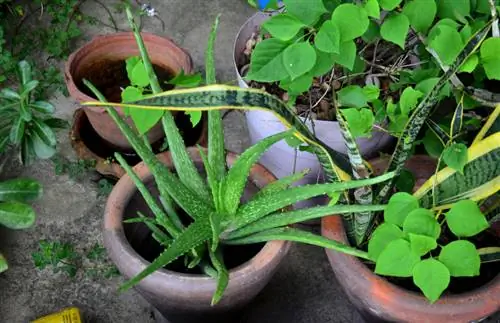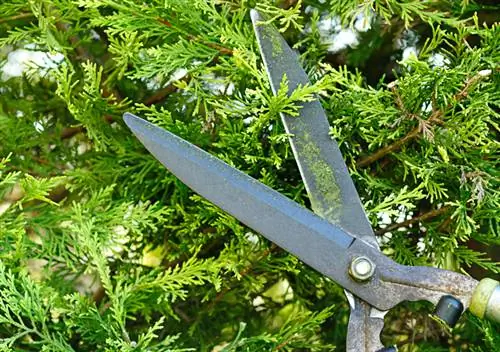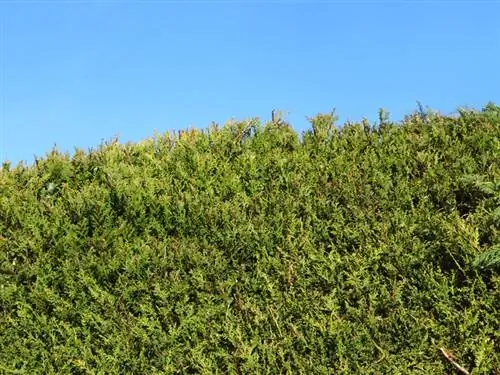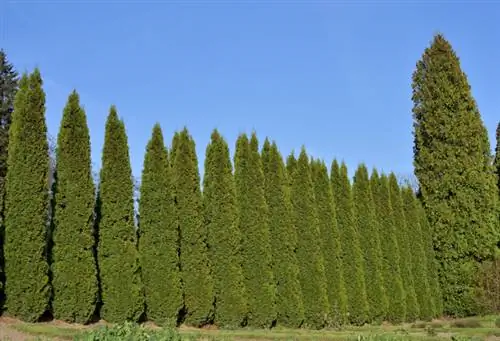- Author admin [email protected].
- Public 2023-12-16 16:46.
- Last modified 2025-01-23 11:22.
Leyland cypresses and thujas are often confused because of their similar appearance. What makes these popular hedge shrubs different, how you can incorporate them into your garden design and lots of other interesting information can be found in this article.
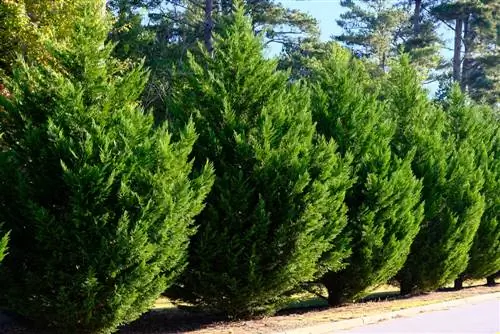
What is the difference between Leyland cypress and thuja?
Leyland cypress and thuja are both evergreen hedge plants, but differ in growth habit, cones, foliage, color and smell. Leyland cypresses grow faster and have finer needles, while thujas grow more compactly and smell more aromatic. Both are easy to care for and ideal for hedges and solitary trees.
Are Leyland cypress and thuja identical trees?
TheLeyland cypress(Cupressocyparis leylandii) and theThuja(Thuja occidentalis), also called the Western tree of life, belong to the order of Conifers andhavethereforesimilar characteristics.
Both plants are very suitable as evergreen, densely growing hedge shrubs that are extremely tolerant of pruning. What they also have in common is that they are shallow-rooted and hardy.
What are the differences between Leyland cypress and Thuja?
The main differences can be seen inthe growth habit, the cones, the foliage, the color and the scent.
- Growth: Leyland cypresses grow faster but are less compact than Thujen.
- Foliage: Thujas have coarser needles than the Leyland cypress.
- Color: While thujas are always dark green, there are cypress varieties with yellow leaves.
- Cones: Leyland cypresses have round cones, Thujas have elongated ones.
- Smell: Thujas smell more aromatic than Leyland cypresses.
Which is easier to care for: Leyland cypress or thuja?
Both plants are quite insensitive and require little care:
Thujen hedges need two topiary cuts per year because they should never get out of shape. If you cut a thuja back to the unscaled shoot area, it will grow only sparsely and may remain bare in some places.
The Leyland cypress is very vigorous, which is why it usually needs to be cut three times a year. In addition, it tolerates drought poorly and should be watered thoroughly if there is no rain.
For what purposes are Leyland cypress or thuja suitable?
Both the Western arborvitae and the Leyland cypress areattractive, urban climate-friendly hedge plants. However, the trees are sensitive to road s alt and should therefore not be planted near the road.
Leyland cypresses and thujas are also suitable assolitary trees,which, thanks to its natural conical shape, is an enrichment for modern or classically designed gardens. Both variants can be cultivated in a pot on a balcony or terrace.
Tip
Occidental thuja and Leyland cypress contain toxins
Before planting, please consider that both thuja and Leyland cypresses are poisonous. Therefore, you should only cultivate the bushes where it is ensured that no small children could snack on the branches. In addition, contact with the scale-shaped leaves of both shrubs can trigger allergic reactions.


